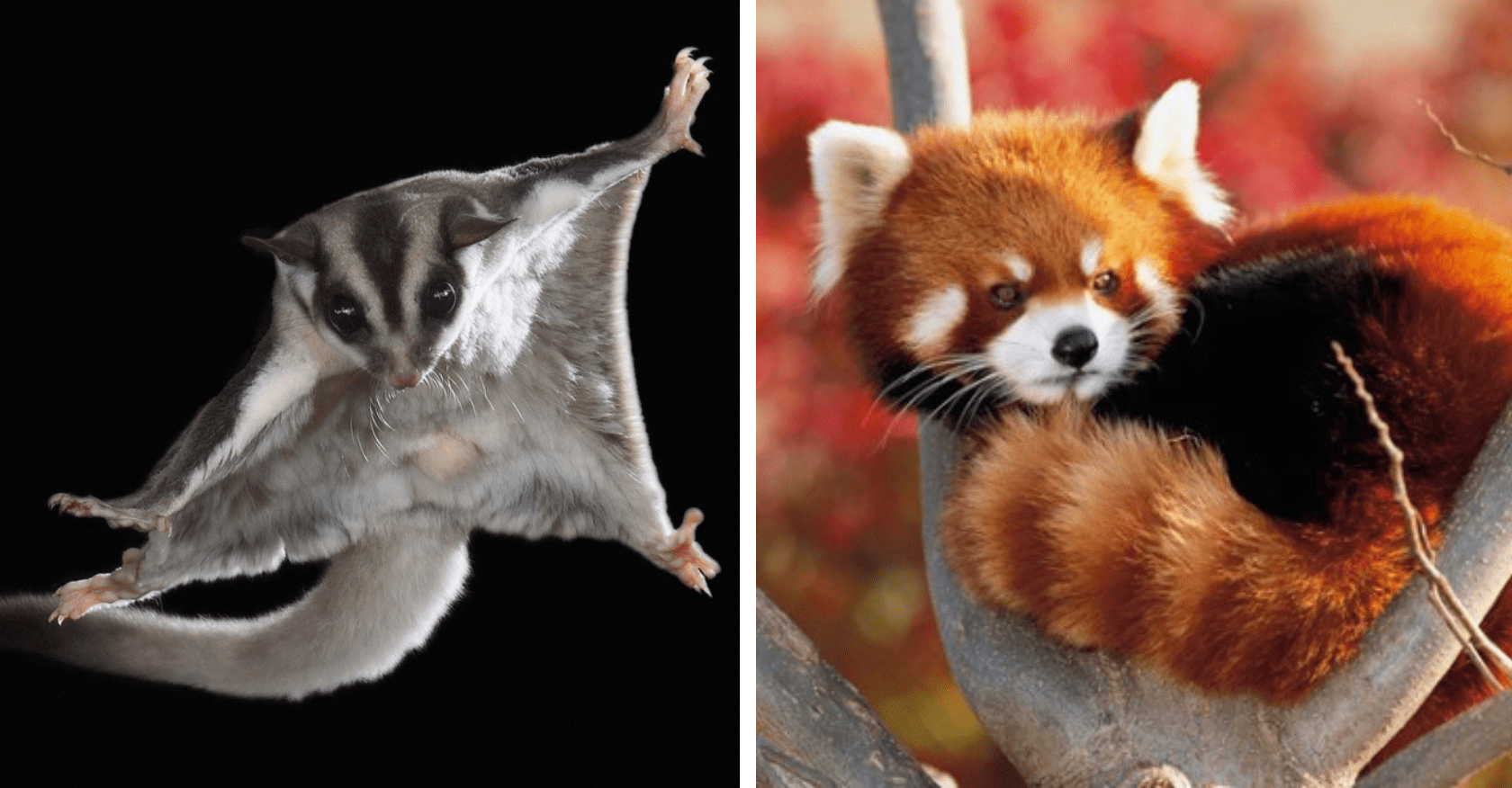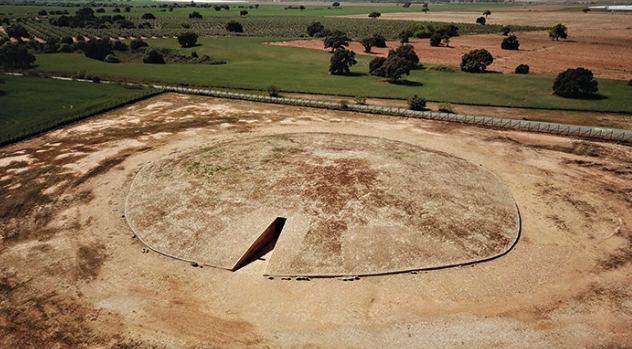Nocturnal feeding is an animal behavior characterized by nocturnal activity, mainly by sleeping during the day as this reduces the risk of predation, or by excessive daytime temperatures and competition. of other animals. Among the hundreds of species of nocturnal animals, there are many beautiful-looking animals. Let's find out with Toplist!
Australian Flying Squirrel
The Australian Flying Squirrel, also known as the Sugar Glider, is a nocturnal animal native to the forests of Australia and Indonesia. These animals are named after their unique ability to move. Their food is mainly sugary fruits and vegetables. Flying squirrels have a membrane between their wrists and ankles and it allows them to fly between trees. The Australian Flying Squirrel lives in packs and is considered an exotic pet in some parts of the world.
The Australian flying squirrel is nocturnal. They sleep during the day and forage at night. The Australian flying squirrel's large eyes enhance night vision. They also have an excellent hearing that helps locate prey in the dark such as insects and rodents.
Adult flying squirrels are 18–30 cm long, including the tail, when adults can weigh up to 200g, they have an extremely soft coat with a black stripe running down their body and possess A thin membrane extending from the middle of the arm to the end of the hind leg gives them the ability to fly up to 60-100 meters in seconds. They live in the forest. Newborn cubs will automatically crawl into a small bag in front of the mother's chest and suckle until they are stronger. They are quite intelligent like dogs. They can remember their names if they play with them often. They are quite gentle, they can play with domestic pets such as dogs, cats, parrots. They love to climb, run and jump. The life expectancy of the Australian Flying Squirrel is quite high from 12-15 years.
The Australian flying squirrel is a pet that has won the hearts of young people today, with a gentle appearance, soft fur, lovely big eyes and especially the ability to fly in the air very interesting. They are easy to tame and close to humans. When caring for them, people often feed sweet-tasting species such as flowers, nectar, pollen, tree buds, sap, leaves, seeds, and insects.
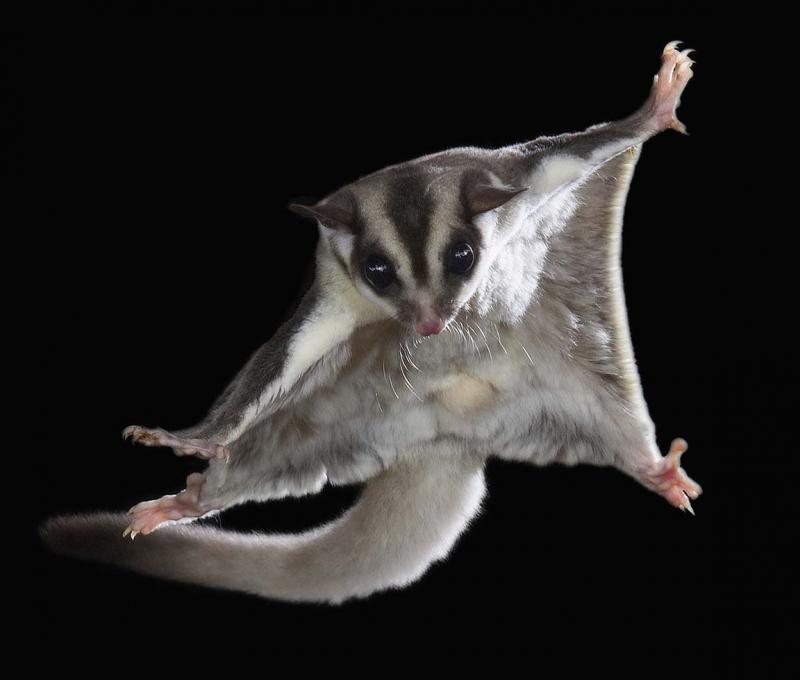
Australian Flying Squirrel
Luna moth
The Luna moth is a large nocturnal butterfly, the Luna moth found in the woodlands of North America. The night Luna moth is admired for its large green wings with yellow bands. The wingspan of the Luna moth is approximately 12 cm. Luna moths only feed at night and often circle around outdoor lights.
The larval stage of the Luna moth lasts 3-6 weeks. During this period they feed continuously on different trees such as cherries, chestnuts, walnuts and pecans. They only live for 7 days when turning into an adult Luna butterfly. Mating and feeding are the sole jobs of the Luna moth during their short lifespan.
The Luna moth is a moth with calcareous blue wings and a white body. Larvae are green. It is a New Zealand moth in the family Saturniidae, subfamily Saturniinae. This butterfly is found in North America, from east of the Great Plains in the United States – Florida to Maine, and from Saskatchewan eastward through central Quebec to Nova Scotia in Canada.
They usually have a female span of about 114 mm (4.5 in), but can exceed 178 mm (7.0 in), making them one of the larger moths of North America. Across Canada, they breed once a year, with winged adults appearing in late May or early June, while further south it will have two or even three litters per year, first appeared in early March in the southern United States.
As defense mechanisms, the larvae clack as a warning and also roll up their intestines, which has been confirmed to have a deterrent effect on a variety of predators. The long tails of the hindwing are thought to confuse echolocation detection used by predatory bats. A parasitic fly intentionally introduced into North America for biological control of the invasive species Lymantria dispar appears to have had a negative effect on this and other native moth species.
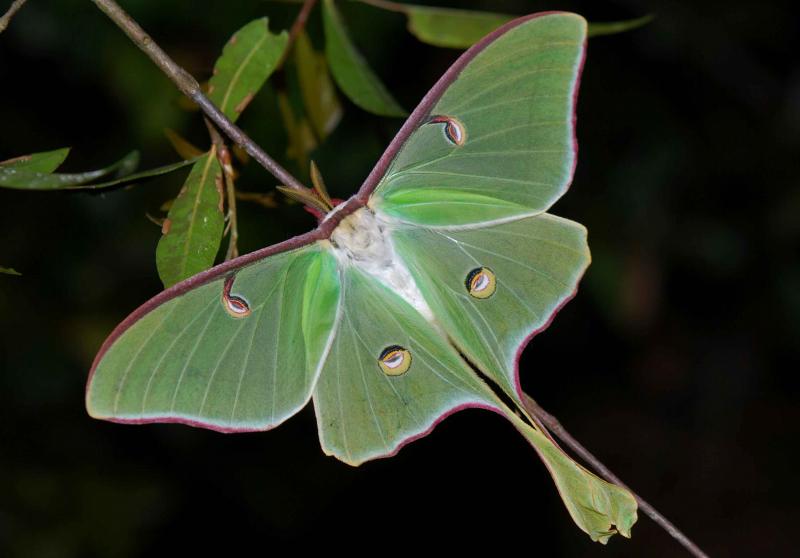
Luna moth
Slow Loris
The Slow Loris, also known as the slow loris, is a nocturnal primate found in Southeast Asia. There are 5 different species of Slow Loris in the world. They usually spend the day sleeping on tree branches and feed at night. Slow Loris possesses powerful fingers, thanks to which they can move quickly through branches. Slow Loris also have an extremely good sense of smell, thanks to which they locate their prey. Slow Loris mainly eats small birds, reptiles, eggs and even fruit.
Slow Loris live mainly in green forests of primary or secondary forests. Their food is insects, beetles, fruit, leaves, eggs and young birds in nests... They live in all forest habitats, including bamboo forests, shrub hills and hills. … As nocturnal animals, during the day they curl up and sleep in the bushes. They are mainly active at night, in the open forest, on the stumps, bushes near the forest, on the upland fields.
The distinguishing feature of this lovely little monkey is its soft tawny fur with a few silvery white hairs. There is a white spot along the bridge of the nose. There is a crimson scar along the spine. Silvery white belly. An adult Slow Loris is only 19 - 23 cm, weighing from 377 grams to 450 grams.
The reproductive organs of Slow Loris are most fully developed when the female is 16 months old and the male is 18 months old. Their gestation period usually lasts from 184 to 200 days. When young, Slow Loris will cling to the mother's belly. After six months, they will wean.
In Vietnam, the small loris is on the list of plants and animals prohibited from exploitation and use for commercial purposes.
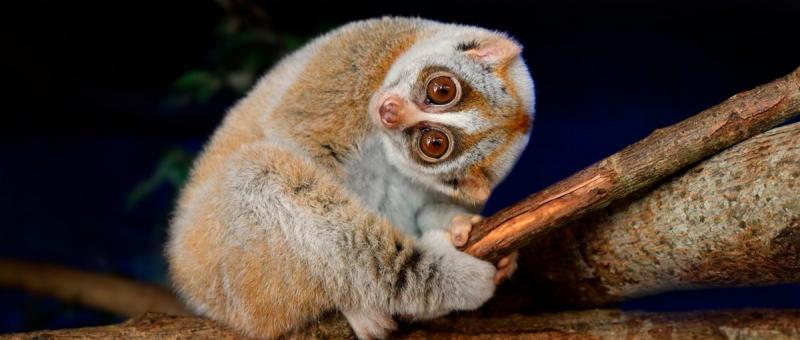
Slow Loris
Red-eyed frog
A colorful frog, they often live in the tropical forests of Central America and southern Mexico.
Most individuals possess a blue body. They spend most of the day camouflaged under leaves and are active only at night. When feeling threatened by predators, the red-eyed frog often opens its eyes wide to surprise predators.
The red-eyed frog (scientific name: Agalychnis callidryas) is a species of sharp arboreal frog native to the neotropical rainforests of Central America. Red-eyed frogs have red eyes and orange toes. Males range in length from 5.08 cm to 6.35 cm and females from 6.35 cm to 7.62 cm. Juveniles are typically brown and turn more green as they grow, although adult frogs can change their skin color slightly depending on the environment. This species has soft skin that breaks easily on the belly and the skin on the back is thicker and rougher.
The red-eyed tree frog is one of the most colorful and well-known tree frogs in the world. This tree frog lives mainly in lowland tropical rainforests stretching from southern Mexico to northern Colombia. They have the ability to climb trees and balance on trees thanks to their small bodies with sharp claws. Unlike many amphibians living in the same territory, the Red-eyed Frog appears to be less affected by the chytrid fungus (Batrachochytrium dendrobatidis), which has caused the extinction of many of its relatives. Until now, scientists are not sure why they can be immune, but perhaps it is more or less due to the arboreal lifestyle of the Red-Eye Frog.
During the breeding season, the red-eyed tree frog lays its eggs on a leaf that protrudes out of the water. After a while, the eggs will hatch into tadpoles and then dive into the water. Currently, this species of frog is being bred quite widely and quickly becoming a popular species on the "pet" market.
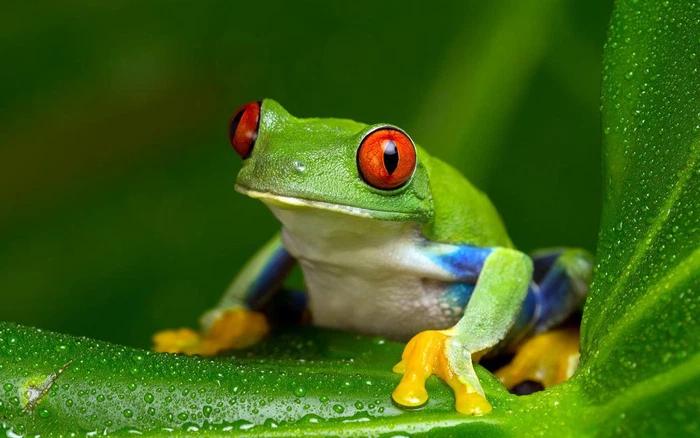
Red-eyed frog
Red panda
A famous nocturnal creature, the red panda is commonly found in the high mountains of the Eastern Himalayas. They spend most of their time sleeping in trees, and only come down to the ground at night to forage. Thanks to their activity at night, they avoid the threat of attack from predators.
The red panda (Ailurus fulgens) is a mammal native to the eastern Himalayas and southwestern China. It is listed as an endangered species on the IUCN Red List as the wild population is estimated at less than 10,000 adults and continues to decline due to habitat loss and fragmentation, poaching and deforestation. reduced inbreeding. Despite its name, the species is not closely related to the giant panda.
The red panda has reddish-brown fur, a long, shaggy tail and a waddling gait due to its shorter front legs; It is roughly the size of a domestic cat, although it has a longer body and is somewhat heavier. It is herbivorous and mainly eats bamboo, but also eats eggs, birds and insects. It is a solitary animal, mainly active from dusk to dawn, and largely sedentary during the day. It is also known as the little panda and the red raccoon.
The red panda is the only living member of the family Ailurus and the family Ailuridae. It was previously placed in the family pandas and bears, but phylogenetic analysis strongly supports its species classification in its own family, Ailuridae, which is part of the superfamily Musteloidea, along with with the mink, raccoon, and skunk families. Traditionally, it was thought to include two subspecies. However, the results of genetic analysis indicate that there may be two distinct species of red pandas, the Chinese red panda and the Himalayan red panda, which were genetically different 0.22 million years ago.
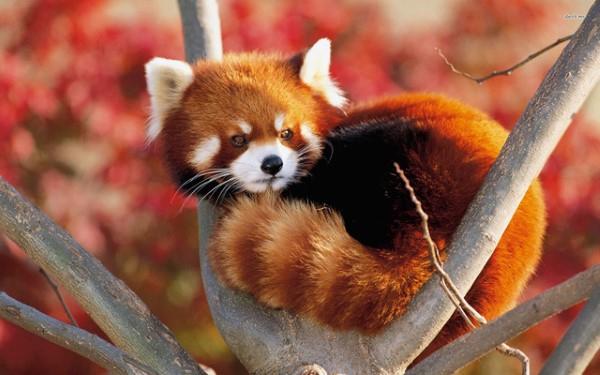
Red panda

